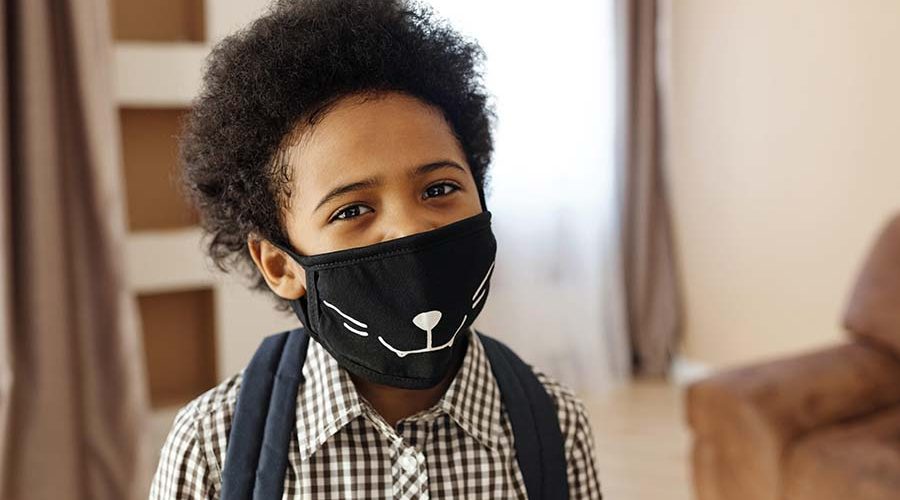Matthew Margetts, Director of Sales and Marketing at Smarter Technologies, explores how digitalising school facilities can maximise efficiency in response to COVID-19.
Smarter Technologies
While lockdown restrictions are being eased, it is likely that COVID-19 will leave a lasting legacy on our attitudes to safety and building management. As schools readjust to operating within the new norm, one thing is for certain: there is always room for vigilance when it comes to school processes. Whether to reduce costs, maximise efficiencies, or achieve optimal wellbeing of school-going children, smart technologies are here to stay for their extensive benefits.
Schools of the future will be smarter
COVID-19 has underscored the importance of automated processes, which are adaptable to different building occupancies and shifting challenges. As schools around the world take the first steps towards digital transformation, the simplicity and ease of integration of some smart technologies are showing marked cost savings; streamlined safety, maintenance and operational efficiencies; and enhanced green potential. Real-time reporting from sensors and technologies are mobilising schools to adopt a data-driven approach to take their schools into the future.
COVID-19 considerations
Since withdrawn, the Government’s guidelines on schools’ management during COVID-19 have provided food for thought for governing bodies and facilities managers in the school setting. It is also driving the adoption of data-based smart solutions to counteract operational challenges and reduce costs. The guidelines dealt with partially-closed facilities – and guidelines for full opening have since been issued. Within the school context, the categories outlined in the original guidelines are perennially important and, with a bearing on safety, the more precise, the better.
Coronavirus and temperature checking Across different facilities, temperature screening has become a naturalised daily occurrence, with elevated temperatures a good indicator of underlying illness. In the school setting, crowd screening technology has the potential to give live temperature readings, alerts and access control functionality. It can also be used as a contact traceability tool when high temperatures are detected. Using infrared sensors, this technology provides medically accurate readings in real-time with minimal disruptions or student backlogs.
Hot and cold water systems
The dormancy of school buildings has created a secondary worry around legionella – and the latest guidance from The Department of Education encourages the usual pre-term building checks are conducted. This is an ongoing responsibility and one which is traditionally labour-intensive – involving hot and cold water temperature testing and flushing. This bacteria causes legionnaires’ disease, which is preventable yet potentially fatal. Automated legionella testing removes the need for human effort, cost, potential exposure and manual record-keeping. It also provides alerts of undesirable temperature readings and expedited response times – which, in buildings of extensive pipework, can avoid hefty maintenance bills. This smart approach to legionella maintenance is a simple compliance tool, which will help to ensure statutory obligations and prevent sometimes punitive penalties.
A smarter outlook on energy and green transformation
Without question, saving energy is smart – and smart technologies are leading the charge in helping schools to reduce consumption and achieve green goals. This is being achieved in a range of ways – from constant monitoring of HVAC usage, heating systems and lighting to the development of data-driven maintenance schedules to keep equipment performing efficiently. Smart sensors can deliver real-time insights on usage and occupancy, reducing waste to a minimum.
Compliance around fire safety monitoring
Fire safety is a key compliance concern for schools. A system of smart tags and sensors can perform system tests, monitor extinguishers for tampering (notifying personnel on movement and weight changes, for instance), report on gas leaks and other risk factors, and keep a detailed, cloud-based record for compliance purposes. This removes the chance of human error and works together with smoke and fire alerts, automated roll call and fire door monitoring to offer schools a demonstrably meticulous approach to fire safety.
There’s smart and there’s smarter
IoT (Internet of Things) solutions providers, like us, have developed a suite of smart solutions which cater to the schools of the future. Wireless, long-lasting and cost-effective solutions combine a system of tags, sensors and pressure pads, which transmit data over a secure and private network. These powerful tools send data to a remote dashboard in real-time, with alerts for undesirable readings, breaches and metrics – tailored to facilities owners’ buildings, assets and needs. With a user-friendly interface, these systems also collect data for thorough record-keeping and meaningful data insights, which have the potential to inspire informed decision-making and strategic development as schools continue to respond to the ongoing COVID-19 crisis.









